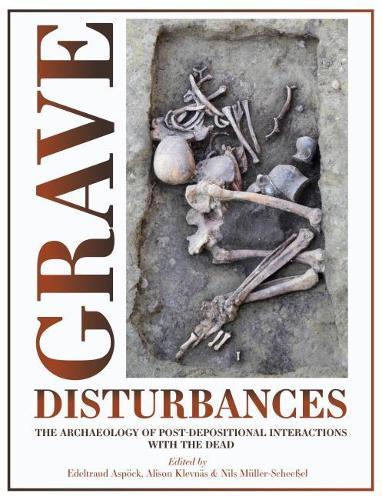Overview
Archaeologists excavating burials often find that they are not the first to disturb the remains of the dead. Graves from many periods frequently show signs that others have been digging and have moved or taken away parts of the original funerary assemblage. Displaced bones and artefacts, traces of pits, and damage to tombs or coffins can all provide clues about post-burial activities. The last two decades have seen a rapid rise in interest in the study of post-depositional practices in graves, which has now developed into a new subfield within mortuary archaeology. This follows a long tradition of neglect, with disturbed graves previously regarded as interesting only to the degree they revealed evidence of the original funerary deposit. This book explores past human interactions with mortuary deposits, delving into the different ways graves and human remains were approached by people in the past and the reasons that led to such encounters. The primary focus of the volume is on cases of unexpected interference with individual graves soon after burial: re-encounters with human remains not anticipated by those who performed the funerary rites and constructed the tombs. However, a first step is always to distinguish these from natural and accidental processes, and methodological approaches are a major theme of discussion. Interactions with the remains of the dead are explored in eleven chapters ranging from the New Kingdom of Egypt to Viking Age Norway and from Bronze Age Slovakia to the ancient Maya. Each discusses cases of re-entries into graves, including desecration, tomb re-use, destruction of grave contents, as well as the removal of artefacts and human remains for reasons from material gain to commemoration, symbolic appropriation, ancestral rites, political chicanery, and retrieval of relics. The introduction presents many of the methodological issues which recur throughout the contributions, as this is a developing area with new approaches being applied to analyze post-depositional processes in graves.
Full Product Details
Author: Edeltraud Aspoeck ,
Alison Klevnas ,
Nils Muller-Scheessel
Publisher: Oxbow Books
Imprint: Oxbow Books
Volume: 14
ISBN: 9781789254426
ISBN 10: 1789254426
Pages: 256
Publication Date: 01 July 2020
Audience:
Professional and scholarly
,
Professional & Vocational
Format: Hardback
Publisher's Status: Active
Availability: Out of stock

The supplier is temporarily out of stock of this item. It will be ordered for you on backorder and shipped when it becomes available.
Reviews
The volume is a must for all those with an interest in funerary archaeology: disturbed remains, previously largely ignored or viewed as insignificant, can be considered with fresh eyes - a paradigm has been shifted. * Current World Archaeology * This is an excellent reference and resource for advanced students and professional scholars interested in bioarchaeology and forensic anthropology. * CHOICE *
The volume is a must for all those with an interest in funerary archaeology: disturbed remains, previously largely ignored or viewed as insignificant, can be considered with fresh eyes - a paradigm has been shifted. * Current World Archaeology *
Author Information
Edeltraud Aspoeck is a researcher at the Austrian Academy of Sciences, where she carried out the project 'Microtaphonomy and interpretation of reopened graves' and projects in digital archaeology. She obtained her PhD at the University of Reading in 2009. Her research interests are mortuary archaeology, the early Medieval period and digital archaeology. Alison Klevnas is a researcher in the Department of Archaeology at Stockholm University, where she has been teaching since completing her PhD at the University of Cambridge in 2010. She is currently leading a project funded by the Swedish Research Council called 'Interacting with the dead. Belief and conflict in Early Medieval Europe (AD 450-750)'. Nils Muller-Scheessel is Scientific Editor at Kiel University, Germany. He obtained his PhD in 2006 at the University of Tubingen. His particular interests include the means and meaning of the disposal of the dead, landscape archaeology, the possibilities of remote sensing, and quantitative methods.




